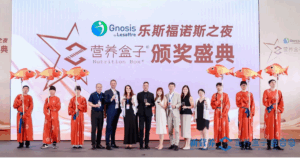
Review paper, completed as part of INTRICARE and EVOluTION research grants, advances argument for Vitamin K2-specific RDI.
The International Journal of Molecular Sciences has published a new review paper examining the differences between vitamins K1 and K2, showing that based on its very molecular structure K2 is available beyond the liver to support systems like the bone and vasculature through proper calcium utilization. The review paper, the result of the INTRICARE and EVOluTION grants awarded to ex-NattoPharma’s International Research Network by the European Union within the Horizon 2020 Marie Skłodowska-Curie research and innovation program, is an important step in establishing the need for a Vitamin K2-specific recommended daily intake (RDI).
According to the authors, the paper “Vitamin K: Double Bonds beyond Coagulation Insights into Differences between Vitamin K1 and K2 in Health and Disease”, is the first to highlight differences between isoforms vitamin K1 and K2 by means of source, function, and extrahepatic activity. Prof. Schurgers states that functions of K2 are proving to be beneficial with regard to cardiovascular diseases and bone metabolism, yet there is a growing body of evidence suggesting vitamin K2 is involved in multiple cellular processes and might have a protective role in various organs throughout the human body. To that end it is important to consider an RDI reflective of these additional roles.
“When exploring the non-coagulation, extrahepatic activities of vitamin K, it is clear that K2 in its various forms is the highlight of such activity. Therefore, although history and nomenclature have classed K1 and K2 into the same category, these molecules can have a very different action in the body,” says Prof. Schurgers, Professor of Biochemistry of Vascular Calcification and Vice Chair of Biochemistry at the Cardiovascular Research Institute Maastricht (CARIM), Maastricht University; and senior author and leader of the research project. “Major health organizations, such as WHO, European Food Safety Authority (EFSA) and Food and Drug Administration (FDA) have established RDI for vitamin K, which is solely based on the dose of K1 to retain an appropriate blood clotting function. Differences between K1 and K2 merit recognition among national and international regulatory organizations, and remain open to research.”
The role of K2 in vascular calcification
The paper is significant because it is a necessary step towards recognizing the importance of a vitamin K2-specific RDI, an endeavor ex-NattoPharma is currently spearheading with the help of its research partners, according to ex-NattoPharma Chief Medical Officer Dr. Hogne Vik.
“This review paper continues to explore the differences between Vitamin K1 with its known benefit for coagulation and the newly recognized benefits of Vitamin K2 also to function extrahepatically to support bone and cardiovascular health,” says Vik. “Practically, the body of evidence today supports a dominant role for Vitamin K2 in the inhibition of calcification of soft tissues because of its better bioavailability and bioactivity. Observational studies and gold standard double-blind, placebo-controlled trials show that Vitamin K2 may inhibit vascular calcification and even hold progression of vascular stiffness.
“Recognition of Vitamin K2’s benefits as strong and significant elucidated inhibitor of vascular and soft tissue calcification is one of the core reasons a separate RDI should be established,” Vik adds. “We are proud that our partnership with Maastricht University and these prestigious grants have given us an opportunity to further the understanding of the necessity of obtaining adequate vitamin K2 for human health.”
The review paper is the result of the INTRICARE (grant agreement No 722609) and EVOluTION (grant agreement No 675111) grants funded by the European Union within the Horizon 2020 Marie Skłodowska-Curie research and innovation program, awarded to NattoPharma’s International Research Network to train a total of 26 Early Stage Researchers (ESRs) focusing on harnessing endogenous mechanisms for health and the effect of vitamin K to hold or regress microcalcification and subsequent cardiovascular disease.
Reference:
Halder M, Petsophonsakul P, Akbulut AC, Pavlic A, Bohan F, Anderson E, Maresz K, Kramann R, Schurgers L. Vitamin K: Double Bonds Beyond Coagulation Insights Into Differences Between Vitamin K1 and K2 in Health and Disease. Int J Mol Sci. 2019, 20, 896; doi:10.3390/ijms20040896
PR: NattoPharma Research Network Receives 4M€ Research Grant
PR: NattoPharma Named Partner for Horizon 2020 EU Research Grant
DISCOVER ALL OUR LATEST NEWS

Webinar Rethinking Women’s Health 24 June 2025
Women’s health is complex, constantly evolving, and a broader perspective is long overdue, one that goes beyond reproductive care to include mental health, chronic conditions, and the unique ways diseases manifest in women.

Gnosis by Lesaffre Highlights Quatrefolic® at New Nutrition Forum in Hangzhou, China
Gnosis by Lesaffre was proud to serve as the Title Sponsor of the New Nutrition Forum held in Hangzhou on June 6, 2025. As part of the event’s scientific agenda, we hosted an engaging seminar focused on Quatrefolic®, the 4th generation active folate.

Biotic Live: A Successful First Edition Exploring the Power of Probiotic Yeasts
Gnosis by Lesaffre recently hosted the first edition of Biotic Live, a unique event dedicated to exploring the potential of probiotic yeasts. This live session brought together leading experts to present the latest scientific insights and real-world applications of live yeasts in human health.


